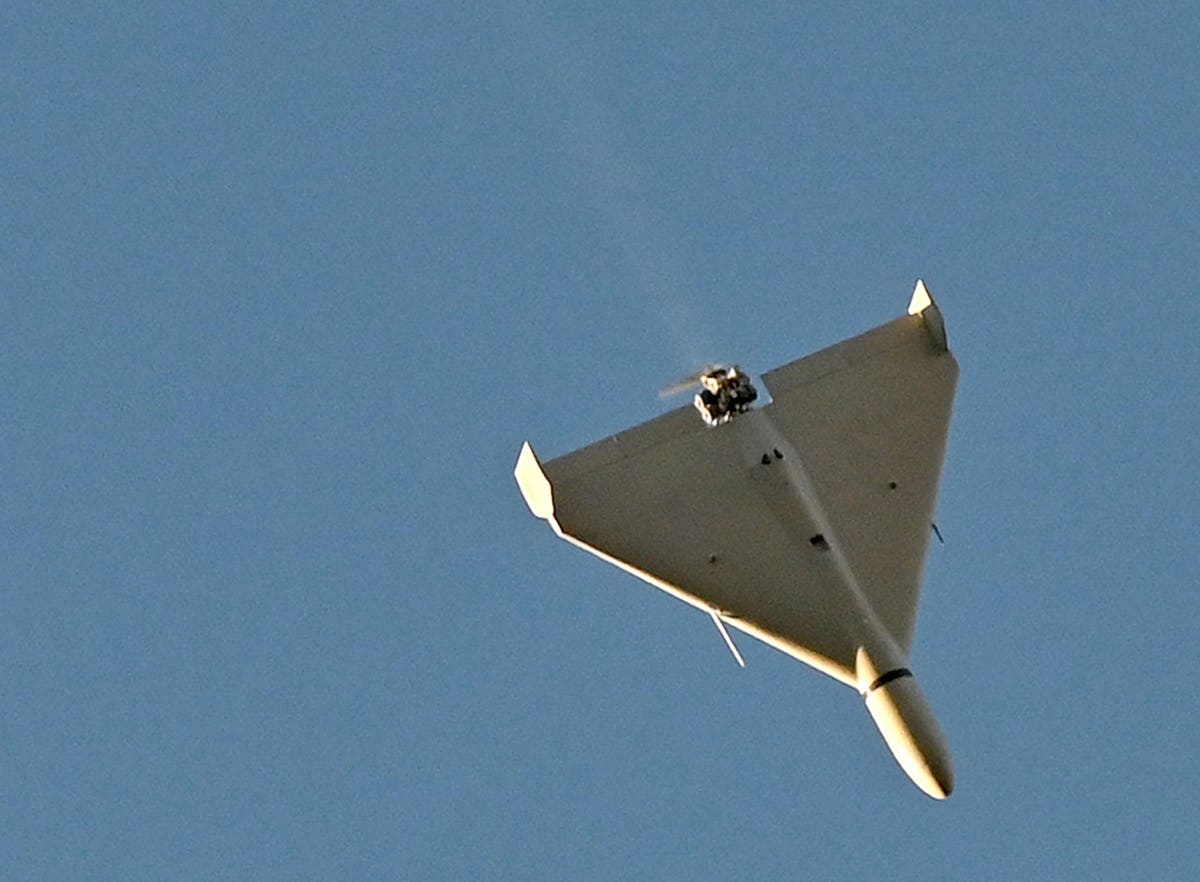The United States is urging Iran to cease supplying drones to Russia as part of its broader efforts to reduce tensions and restart talks on Iran’s nuclear program. However, through technology transfers and other assistance, Iran has already helped Russia produce its drones locally and, to some extent, independently.
The U.S. hopes Iran will stop selling Russia drones as part of an “unwritten understanding” between the two longtime adversaries to deescalate mounting tensions, Financial Times reported on Aug. 16. Washington wants Tehran to stop supplying drones and spare parts, the report disclosed, citing an Iranian official and another person briefed on the talks.
Concurrent reports indicate Russia is making some progress in producing Iranian drone designs locally for use against Ukraine. The day after the Financial Times report, an investigation by the independent British-based Conflict Armament Research disclosed details of Russia’s progress in manufacturing copies of Iranian loitering munitions (self-detonating, explosive-laden drones).
The researchers based their findings on examinations of two loitering munitions shot down over Ukraine conducted in July. The Iranian Shahed-136s contained Russian-made components and noticeably distinct fuselages from previous Shahed-136s manufactured in Iran and used by Russia against Ukraine.
The fact that Russia has built and deployed a tailor-made version of the infamous Shahed suggests it has made some headway in jumpstarting domestic production of these drones.
The Washington Post also disclosed new details about Russia’s plans for manufacturing Shahed-136s the same day. Citing leaked documents it obtained, the Post revealed that “Moscow has made steady progress toward its goal of manufacturing a variant of the Iranian Shahed-136.”
Russia has ambitious plans to build 6,000 Iranian-designed drones at the previously-disclosed Alabuga factory 500 miles east of Moscow by mid-2025.
“The documents show that the facility’s engineers are trying to improve on Iran’s dated manufacturing techniques, using Russian industrial expertise to produce the drones on a larger scale than Tehran has achieved and with greater quality control,” read the Post report. “The engineers also are exploring improvements to the drone itself, including making it capable of swarm attacks in which the UAVs autonomously coordinate a strike on a target.”
Despite “steady progress,” the facility has mainly assembled drones using parts Iran delivered and has only proven capable of building drone bodies independently. Furthermore, researchers cited by the Post who examined the documents estimate the facility is a month behind schedule and “unlikely to meet its target date for the 6,000 drones.”
Still, steady Russian progress toward localized production of Iranian drones will gradually lessen its dependency on Tehran for these unmanned aircraft. The sooner Iran cuts its extensive support to Russia’s drone program – and, by extension, Moscow’s drone campaign against Ukrainian cities – the harder it will be for Russia to meet its already unrealistic production goals and timetable.
Iran has self-interest in doing so if it can have Western sanctions against it eased and future sanctions averted.
In October, the clause in UN Security Council Resolution 2231, passed in 2015 after the implementation of the Iran nuclear deal, prohibiting Iran from exporting ballistic missiles and drones with ranges exceeding 186 miles, will expire. Violating this resolution’s conditions before that date could trigger snapback sanctions against Tehran.
Iranian Shaheds can hit targets from 1,000 miles away, meaning Iran’s delivery of these loitering munitions already technically puts Tehran in violation of 2231.
The European signatories of the Iran nuclear deal plan to maintain sanctions against Iran’s ballistic missile program after October, citing Iran’s supply of drones to Russia and the prospect of Tehran supplying Moscow with ballistic missiles as justification for doing so.
The Iranian official cited by Financial Times said Tehran is worried about Europe reimposing sanctions and hopes to ease tensions with Washington.
“We’re very much concerned about October,” the official told the publication. “We expect [the U.S.] to ease pressure on Iran from different sides.”
Risking continued sanctions for supplying Russia arms could prove less appealing for Iran, especially considering the increased signs of diminishing returns it’s experiencing from its unprecedented defense partnership with Moscow. For example, Russia’s expected provision of Su-35 fighter jets for Iran faces chronic delays, with reportage suggesting Moscow reneged on a fighter order it finalized with Tehran and that Tehran paid for before the current Ukraine war began on Feb. 22, 2022.
On Aug. 12, Iranian international affairs analyst Abd al-Reza Faraji-Rad was quoted in Iranian reformist media observing that “Iran has somewhat lost hope in Russia” amidst “doubts concerning the sale of Russian Sukhoi fighters.”
“Iran wants to speed up negotiations and wants to free itself from Russia,” he said.
Easing current sanctions and averting future ones by suspending unreciprocated arms supplies to Russia could prove an increasingly enticing proposition for Iran.
When the U.S. sold pre-revolutionary Iran 80 Grumman F-14 Tomcat fighters in the 1970s, a promotional Grumman video noted American contractors training Iranian pilots and technicians on that cutting-edge aircraft aimed to work themselves “out of a job.”
Following the 1979 Iranian revolution, the U.S. sought to ground Tehran’s Tomcats by imposing an arms embargo and preventing spare parts from flowing into the country. Despite its best efforts, Iran still has operational F-14s 44 years later.
Russia likely needs more time before it can fully produce Iranian drones tailor-made to its specifications without some degree of Iranian supplies and assistance. If Iran completely withdraws its support for this effort before October, it could have a tangible impact on Russia’s yearlong drone campaign against Ukraine as it enters its second winter.
Read the full article here





